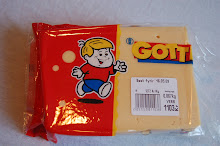
Tuesday, November 30, 2010
Saturday, October 16, 2010
Sunday, October 10, 2010
Look into this
http://www.physics-edu.org/what_is_light.htm
STARLIGHT BENDING AND LENSING EFFECT
http://physics-edu.org/lensing_effect.htm
GRAVITATIONAL LENSING and EINSTEIN RING
http://www.youtube.com/watch?v=yamVbK-J69M&feature=related
PAUL STEINHARDT
http://www.closertotruth.com/participant/Paul-Steinhardt/100
Thursday, October 7, 2010
"Next I want to make a doorbell that sounds like a dying star," Katie Paterson.
http://rhizome.org/editorial/3593
Also
Spencer Finch
http://www.spencerfinch.com/catalogue.php
When a scientist peers into space, either through a standard telescope or with the aid of a fancy space-based observatory, the things she observes emit light energy, called electromagnetic radiation.
Galaxies, nebulae, stars, trees, microscopic bugs and anything else that can be observed glows with energy at one of these wavelengths.
But in recent decades, researchers have become increasingly convinced that there is a vast amount of material in the universe that does not glow at all. This mysterious "dark matter" is believed by most scientists to be the most common stuff in the universe, perhaps making up 90 percent or more of the total mass.
So what is dark matter made of? No one knows for sure.
Normal matter -- you, your computer and the air you breathe -- is made of atoms, which are composed of protons, neutrons and electrons. Scientists call this "baryonic" matter. They suspect some dark matter is of the normal, baryonic variety. This might include brown dwarf stars and other objects that are simply too small, or too dim, to be seen from great distances. But most dark matter is thought to be non-baryonic -- truly strange.http://www.space.com/scienceastronomy/astronomy/dark_matter_sidebar_010105.html A gravitational lens is formed when the light from a very distant, bright source (such as a quasar) is "bent" around a massive object (such as a cluster of galaxies) between the source object and the observer. The process is known as gravitational lensing, and is one of the predictions of Albert Einstein's general theory of relativity. http://en.wikipedia.org/wiki/Gravitational_lens
Sunday, October 3, 2010
via Matthias (danke schon)
http://www.anthonymccall.com/
Marco Breuer (Von Lintel Gallery)
(Izima Kaoru - why can't the corpse be beautiful)
Susan Derges- http://www.susanderges.com/
*Cymatics- http://en.wikipedia.org/wiki/Cymatics
(Look for james Turrel Interviews)
-http://www.pbs.org/wnet/egg/215/turrell/interview_content_1.html
-http://www.conversations.org/issue.php?id=2&st=99-1-turrell
Monday, August 30, 2010
California College of the Arts in San Francisco is pleased to present the fall 2010 lineup of its Graduate Studies Lecture Series.
Jan Verwoert
Thursday, September 23
Jan Verwoert is a Berlin-based art critic and contributing editor to Frieze. In 2009 he presented a series of lectures titled Why Are Conceptual Artists Painting Again? Because They Think It Is a Good Idea at the New Museum, New York, and the Banff Centre, Canada.
Kristee Rosendahl
Tuesday, September 28
In 1985 Kristee Rosendahl pioneered the field of user experience as the cofounder of the Apple Human Interface Group and a principal designer in the Apple Multimedia Lab. She has 25 years of experience in product development, user experience, design, and management for innovative new digital products and applications.
Edgar Arceneaux
Monday, September 30
Edgar Arceneaux’s installation artworks incorporate not only drawing, sculpture, and film, but also music, conceptual art, and science, juxtaposing representative elements of each and opening up newfound associations, unintended connections, interstitial spaces—in his words, "a different way to construct relationships among things."
Barry Lopez
Thursday, October 7 [please note this event starts at 3 pm]
The San Francisco Chronicle has called Barry Lopez "Arguably the nation’s premier nature writer." Lopez is best known as the author of Arctic Dreams, for which he received the National Book Award.
Donald Revell and Claudia Keelan
Thursday, October 7
Donald Revell is a professor of English and director of creative writing at the University of Utah. He is the author of eight collections of poetry, and he has translated two volumes of the poetry of Guillaume Apollinaire. Claudia Keelan is a graduate of Humboldt State University and the Iowa Writers' Workshop, and now director of the MFA program at the University of Nevada Las Vegas. She is the author of five collections of poetry and a letterpress chapbook, and has been published in numerous magazines and journals
Yvonne Yarbro-Bejarano
Thursday, October 14
For several decades Yvonne Yarbro-Bejarano has critically examined cultural representations of Chicana/o queer sexualities, subjectivities, bodies, and desires. Her writings address a variety of media, from literature, visual art, performance, and theater to film and video.
Hunter Lovins
Thursday, October 21
Hunter Lovins proposes that citizens, communities, and companies, working together within the market context, are the most dynamic problem-solving force on the planet. For the past 30 years, as an author and promoter of sustainable development, she has worked to build teams that can create and implement practical and affordable solutions.
Elena Filipovic
Thursday, October 28
Elena Filipovic is the curator at WIELS Contemporary Art Center in Brussels, where she realized the acclaimed Felix Gonzalez-Torres retrospective Specific Objects without Specific Form earlier this year.
Francois Roche
Monday, November 8
Francois Roche is a cofounder of R&Sie(n), an architectural practice based in Paris. The firm’s work is simultaneously organic, biological, and critical, seeking to articulate real and fictional geographic situations as well as narrative structures that can transform them.
Paulina Olowska
Thursday, December 2
Paulina Olowska is CCA's fall 2010 Capp Street Project artist in residence. Her collages, performances, paintings, and neons are influenced by myriad sources: Modernism, Soviet and American propagandist typography, 1960s Pop art, French affichistes, American graffiti art, contemporary fashion, and beyond.

